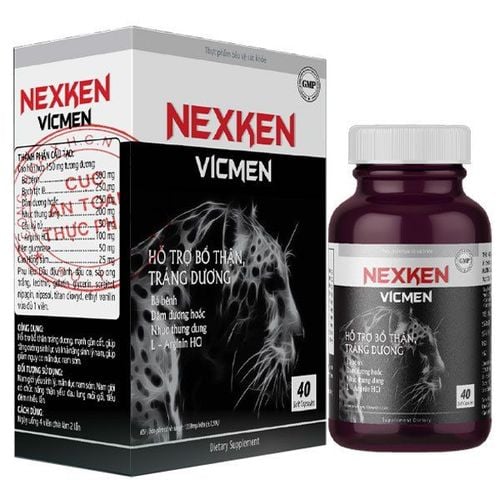This is an automatically translated article.
Oxybutynin belongs to the group of antispasmodics drugs with the active ingredient Oxybutynin. Oxybutynin is widely used and highly effective in the treatment of many diseases.
1. Uses of Oxybutynin 5mg
Before learning about the use of Oxybutynin 5mg, let's answer the question what is Oxybutynin? Oxybutynin is an antispasmodic of the urinary tract. The drug is prepared in the following forms with the corresponding strength:
Tablets 2.5 mg, 3 mg, 5 mg, 10 mg. Long-acting tablets 5mg, 10mg, 15mg. Syrup 5 mg/5 ml; sweet alcohol solution 2.5 mg/5 ml. Transdermal absorption patch ~ 3.9 mg/day. Oxybutynin 5mg is indicated in the following cases:
In adults, the drug is prescribed to treat urinary urgency, urinary incontinence or idiopathic overactivity. In children 5 years of age and older, the drug is used to treat urinary incontinence, urgency, and frequency in overactive bladder due to idiopathic overactive bladder or bladder dysfunction due to idiopathic overactive bladder. nervous (overactive response). In addition, the drug is also effective in treating nocturnal enuresis. However, Oxybutynin is not indicated in the following cases:
Patients who are allergic to the active ingredients or to any of the excipients of the drug Patients with myasthenia gravis. Patients with narrow angle glaucoma or shallow anterior chamber. People with functional or organic gastrointestinal obstruction including pyloric stenosis, paralytic ileus. Patients with ileostomy, colectomy, toxic colitis, severe ulcerative colitis. Obstruction of bladder outlet, where urinary retention may precipitate. Nocturia due to heart or kidney disease
2. Dosage of Oxybutynin 5mg
2.1. How to use Oxybutynin 5mg is prepared in many forms. Therefore, patients should note that, if they are self-medicating with over-the-counter drugs, the patient should read all instructions on the package before taking the medicine; if your doctor has prescribed this medicine, read the leaflet from your pharmacist carefully before you start using Oxybutynin and each time you refill it.
In the form of oral Oxybutynin tablets, the patient can take it on an empty stomach. When taking, swallow the tablet whole with an appropriate amount of water. Absolutely do not crush or break the tablet without consulting your doctor.
In the form of a skin patch as directed by your doctor, usually every 3 to 4 days. If you are self-treating, apply the patch to your skin every 4 days. Follow the dosing schedule carefully. To avoid skin irritation, the patient can apply patches to different areas of the skin. Experts recommend, you need to clean the skin area before applying it with soap and water. Then rinse and dry. If the patches fall off, re-apply or apply a new patch to a new location and continue your schedule.
Regular use will help the drug work in the best way. If using Oxybutynin 5mg after 2 weeks does not work, you need to inform your doctor for advice.
2.2. Dosage For each specific patient, the doctor will prescribe different doses of the drug. Specifically:
For adults with urinary incontinence, a starting dose will be prescribed.
Immediate-release tablets or syrup: 5 mg 2-3 times daily. Extended-release tablets: 5 mg once daily. Transdermal patch: 3.9 mg/day, twice a week (every 3-4 days). Oxybutynin 3% Transdermal Gel: Use 3 pumps (84 mg/day) once daily to clean, dry skin on abdomen, or arms/shoulders, or thighs. Use immediately after injection. Oxybutynin 10% Transdermal Gel: Apply 1 gram (1.14 mL) 100 mg/g Oxybutynin chloride gel once daily to dry skin on the abdomen, arms, shoulders, or thighs. For adults with frequent urination, an initial dose of:
Immediate-release tablets or syrup: 5 mg 2-3 times daily. Extended-release tablets: 5 mg once daily. Transdermal patch: 3.9 mg/day, twice a week (every 3-4 days). Oxybutynin 3% Transdermal Gel: Use 3 pumps (84 mg/day) once daily to clean, dry skin on abdomen, or arms/shoulders, or thighs. Use immediately after injection. Oxybutynin 10% Transdermal Gel: Apply 1 g (1.14 mL) 100 mg/g Oxybutynin chloride gel once daily to dry skin on the abdomen, arms, shoulders, or thighs. For children, the recommended dose will be:
Children over 1 year to 5 years old 0.2 mg/kg/dose, 2 to 4 times daily. Children over 5 years old 5 mg 2 times daily, up to 5 mg 3 times daily. Children 6 years and older: 5 mg once daily. In fact, overdose cases of Oxybutynin have been reported. Some warning symptoms of overdose such as: central nervous system disorders, flushing, hypotension, circulatory failure, respiratory failure, paralysis and coma...
At that time, the patient should be Take to the nearest medical facility for timely treatment such as:
Gastric lavage immediately. Physostigmine by slow intravenous injection. Fever should be treated symptomatically with cold or ice packs. Intravenous propranolol and urinary retention can be managed with catheterization. The curare-like effect progresses to paralysis of the respiratory muscles, requiring mechanical ventilation. In case the patient has an overdose, it should be taken as soon as he remembers that he has missed a dose. The patient can skip the missed dose and take it on schedule if it is almost time for the next dose. Never take a double dose to make up for the missed dose, as this will cause an overdose.
3. Oxybutynin 5mg . side effects
Patients may experience some undesirable side effects when using Oxybutynin 5mg such as:
Some common side effects such as: Dizziness, headache, drowsiness, fatigue, flushing, apple constipation, nausea, vomiting,... Some less common symptoms such as drowsiness, loss of appetite, dysphagia,...
4. Oxybutynin 5mg . drug interactions
Drug interactions can change how the drug works or increase the effect of side effects. Some drugs may interact with Oxybutynin 5mg such as:
Acrivastine drugs; Bupropion; Morphine; Morphine sulfate liposomes; Oxymorphone; Umeclidinium is generally restricted from co-prescribing with Oxybutynin. However, in some cases, it is still possible to prescribe it, but the doctor will change the dose or frequency of use of one or both drugs. Donepezil drugs; Galantamine; Ketoconazole; Rivastigmine must not be taken with Oxybutynin 5mg. The above are not all drugs that can interact with Oxybutynin 5mg. Therefore, you need to inform your doctor about all prescription and non-prescription drugs and supplements you are taking.
In addition, Oxybutynin may interact with food and alcohol. Patients should consult with your health care professional about taking medications with food, alcohol, and tobacco to reduce the risk of interactions.
Some of the following medical conditions may affect the effectiveness of Oxybutynin, such as: Dry mouth (severe and persistent); Prostate enlargement; Glaucoma; Heart disease; Herniation; Hypertension (high blood pressure); Liver failure; Secret urine...
Please dial HOTLINE for more information or register for an appointment HERE. Download MyVinmec app to make appointments faster and to manage your bookings easily.













